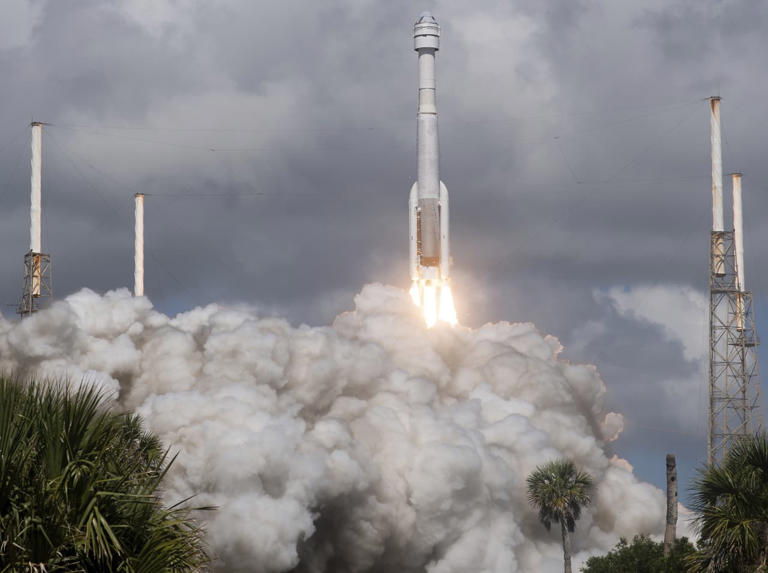
© Joel Kowsky/NASA/Zuma Press
The return of Boeing’s Starliner spacecraft to Earth ended a lonely journey that carried no astronauts but significant risk to the business.
Just after 6 p.m. ET on Friday, the Starliner separated from the International Space Station and landed about midnight on Saturday at NASA’s White Sands Space Harbor, close to Las Cruces, New Mexico. For Boeing and the National Aeronautics and Space Administration, who saw the spacecraft as the start of a new era in human space flight, the trip marked the end of a difficult summer.
The spacecraft’s return trip went off without a hitch, as NASA commentators on the agency’s broadcast reported that mission teams applauded as the ship landed.
The Starliner crew module’s thruster failed during an earlier test, but losing the tool did not prevent the return. NASA reports that the vehicle’s undocking from the space station completed without a hitch.
“I want to commend the work done by the Starliner teams to ensure a successful and safe undocking, deorbit, re-entry and landing,” said Mark Nappe, Boeing’s vice president of operations for Starliner. “We will examine the data and decide on the next steps for the program.”
In June, Starliner flew to deliver agency astronauts Barry Wilmore and Sunita Williams to the International Space Station. The mission’s goal was to show off the capabilities of the Boeing-built vehicle while also returning the astronauts home over the course of about a week.
https://www.msn.com/en-us/video/money/boeing-starliner-to-return-without-astronauts/vi-AA1q1xnE?ocid=BingNewsVerp&cvid=51fb51d67aa84a69b4734432ce0cb352&ei=90Related video: Boeing Starliner to return without astronauts (KSNT Topeka)
NASA handed SpaceX the responsibility to return the astronauts home in February due to problems with the Starliner last month, angering Boeing executives who claimed the vehicle could bring Wilmore and Williams back safely. Even in the event of a successful unmanned return, the future of the Starliner — which Boeing has been working on for years — remains uncertain.
According to NASA Administrator Bill Nelson, Boeing’s new CEO Kelly Ortberg has said the company plans to continue developing Starliner. “We expect to deliver on contract,” Nelson said, referring to the agreement the agency and Boeing made years ago for Starliner.
NASA has already postponed plans for another manned mission for Starliner early next year.
According to NASA program manager Steve Stich, in a briefing on Wednesday, the organization and Boeing intend to spend a month studying how the thrusters operate during descent, identifying any possible adjustments, and resolving any issues.
Space programs frequently have delays and unforeseen issues, which can cause projects to run years behind schedule. While creating Crew Dragon, the vehicle that will eventually return Wilmore and Williams home, SpaceX faced its own set of difficulties.
Starliner has been in the works for more than a decade, and Boeing’s software, stuck valves and other issues have cost the company more than $1.4 billion in losses.
NASA officials have discussed whether challenges with Starliner would be counted as a mission loss by the agency.
Such a classification could lead to further scrutiny of the Starliner program. According to US law, any failed mission would require the establishment of an impartial commission headed by the president to investigate what went wrong.
Certification of the vehicle — the seal of approval from NASA that allows Boeing and the agency to launch regular astronaut missions to the ISS — is still uncertain. Achieving this status for Starliner was one of Boeing’s main goals for the June mission.
According to NASA’s Stich, teams from the organization and Boeing are beginning to investigate the steps needed to fully certify Starliner in the future.
How did you like this article? You can tell us by commenting how you liked our efforts.




